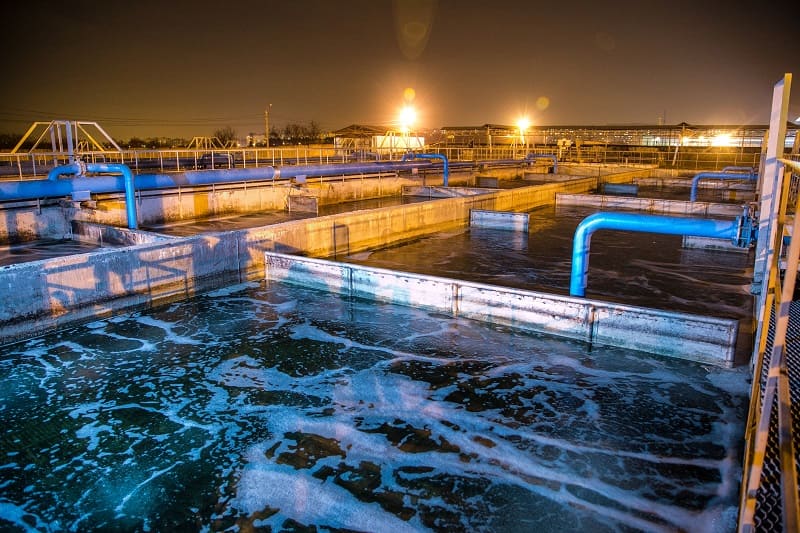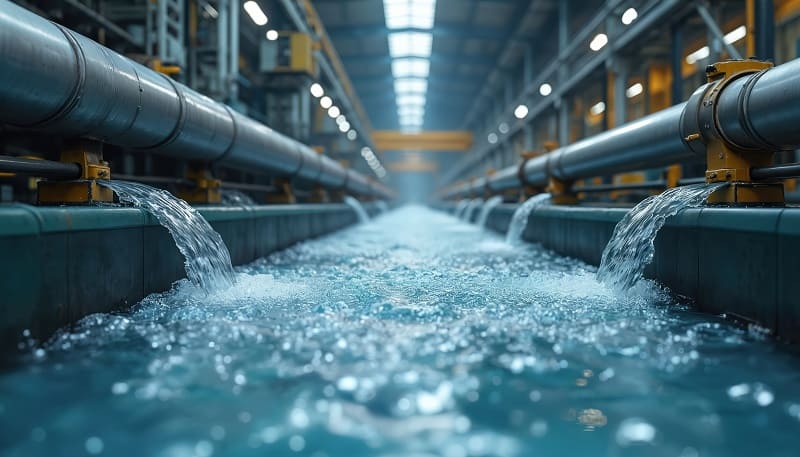Wastewater treatment rarely sits at the top of a facility manager’s daily priorities until the day something backs up, alarms trigger, or a compliance report lands with unwelcome numbers. Equipment designed to protect your operation can suddenly feel like the most demanding system on site.
Knowing how your facility’s wastewater treatment equipment functions, where efficiency is lost, and which upgrades make a measurable difference can shift the process from a constant concern to a quiet success story.
Why Understanding Equipment Performance Can Save More Than Compliance Headaches?
Think of wastewater systems as living ecosystems shaped by metal, chemistry, and biology. Pumps set the pace, blowers feed air to microbial communities, and sensors quietly record the data that defines performance.
When a single wastewater treatment equipment component falters, that balance disappears; energy spikes, effluent quality drops, and maintenance crews scramble to keep up.
Studies by the U.S. Department of Energy estimate that water and wastewater treatment systems account for nearly 2% of national electricity use, with aeration alone consuming up to 75% of a treatment plant’s total energy. Upgrading diffusers, blowers, and process controls often pays for itself through reduced power use and improved consistency.
Compliance and cost efficiency go hand in hand. Most facilities fall under either a National Pollutant Discharge Elimination System (NPDES) permit or a local industrial pretreatment program under 40 CFR 403, both of which set specific limits on solids, biochemical oxygen demand, metals, and pH.
Across varying flow rates and load conditions, the equipment must consistently perform within defined limits. That means that managers need to choose systems that aren’t just good enough for normal use, but stable in the worst situations they can expect.
The Core Stages of Treatment and the Equipment That Keeps Them Running
Every stage of wastewater treatment relies on specialized equipment working in harmony to move, separate, and refine water to required quality standards. From the first screening of debris to the final steps of disinfection and solids handling, each process plays a measurable role in performance, energy use, and compliance.
1. Preliminary and Primary Processes
It starts at the front gate where screens, grinders, and grit removal units defend pumps from damage. Equalization tanks then steady the rhythm, calming hydraulic peaks from production surges or rainfall. These quiet basins give downstream processes a fighting chance at consistency.
Coagulation tanks and dissolved air flotation (DAF) systems dominate this stage. Air bubbles attach to fine particles and oils lifting them to the surface for skimming. Metal coagulants or polymers draw smaller particles together, helping clarifiers work faster. The payoff is simpler biology downstream and fewer chemical surprises later.
2. Secondary Biological Treatment
Here, microorganisms handle what no filter can: digesting organic matter, converting nitrogen, and stabilizing the flow. Activated sludge basins remain the foundation, but compact options such as membrane bioreactors (MBRs) and moving bed biofilm reactors (MBBRs) pack more treatment into less space.
An MBR blends biology and filtration in one tank, producing near-reuse quality water. The EPA even recommends building an extra treatment train for redundancy so maintenance never stops production.
Energy peaks during aeration, where oxygen supports those microscopic workhorses. Fine-bubble diffusers, high-efficiency blowers, and automated oxygen controls can trim power costs dramatically. Facilities that once ran blowers nonstop now let sensors decide when air is truly needed.

3. Tertiary Treatment and Disinfection
The final steps are polishing and disinfection. Media filters, disc filters, and sand beds gather fine particles, while ultraviolet (UV) disinfection units deactivate pathogens without leaving behind chemicals.
Low-pressure UV systems can achieve the required pathogen reductions with contact times as short as 20 to 30 seconds, reducing their footprint and operational complexity, according to EPA research. When chlorine disinfection is used, dechlorination systems remove excess residue before discharge to safeguard aquatic life.
4. Solids Handling and Dewatering
Managing solids efficiently is a constant concern for any treatment facility. Belt filter presses and centrifuges are the most common mechanical dewatering options. EPA data indicates belt presses typically yield solids in the 20 to 44% range, while centrifuges often achieve 22 to 40% depending on sludge characteristics.
Belt filter presses and centrifuges squeeze water from biosolids until only a dense cake remains. Every extra percent of dryness saves thousands in transport and disposal costs each year.
Where Energy, Maintenance, and Monitoring Intersect
Wastewater plants often reveal their health through power bills and data logs long before anything goes wrong. Aeration, pumping, and sludge handling dominate energy use; together, they can reach two-thirds of total consumption.
Automating those systems with dissolved oxygen or ammonia feedback loops transforms them from blunt instruments into precision tools. Facilities tracking energy per thousand gallons treated quickly spot inefficiencies that older plants simply absorb as “the cost of doing business.”
Smart controls do more than save power; they protect uptime. SCADA systems that monitor flow, turbidity, oxygen, and blower amperage alert operators to subtle changes before they escalate.
When connected to digital maintenance logs, those same signals help predict component failures. Routine calibration keeps the information trustworthy, turning data into a practical decision-making tool rather than another screen to ignore.
Maintenance discipline keeps everything tied together. Pumps need scheduled rebuilds, fine-bubble diffusers must be cleaned to prevent fouling, and belt presses wear slowly until performance collapses.
Plants that document service intervals and integrate them into asset management software often extend component life and reduce unplanned downtime.
The Procurement Balancing Act and the Importance of Data-Driven Choices

Choosing wastewater treatment equipment means balancing reliability, cost, and compliance performance over the long term, spanning decades of service.
Equipment should be selected based on hydraulic flexibility, redundancy for essential processes, and compatibility with control systems already in place. Evaluating life-cycle costs rather than upfront price is a smarter strategy, considering that energy and chemical consumption often exceed initial capital investment within a few years.
Managers should also consider serviceability; readily available parts, local support, and easy access for cleaning and inspection make a tangible difference in long-term performance. Request operating data, documented performance ranges, and references from similar-sized facilities when evaluating vendor proposals.
Examining Water Environment Federation resources or EPA fact sheets helps to align expectations and validate claims.
Looking Ahead to Smarter Wastewater Treatment Equipment Choices
When wastewater treatment equipment works as a system rather than a collection of parts, uptime improves and equipment lasts longer. Facilities that invest in modern controls, disciplined maintenance and forward-thinking partners can meet tougher standards without adding stress to operations.
If you’re ready to see how well your current systems measure up, schedule an equipment assessment with Environmental Remedies and turn your wastewater process into a cleaner, smarter, and more sustainable advantage.
Frequent Questions Facility Managers Ask About Wastewater Equipment
Q: How often should blowers be serviced?
A: Most high-speed blowers require inspections every 6,000 hours. Oil changes and bearing checks are critical.
Q: Do I need tertiary treatment if I meet discharge limits?
A: It depends on your permit. Tertiary steps improve resilience and ensure consistency during spikes.
Q: What’s the best way to justify new equipment?
A: Track energy, maintenance hours, and chemical usage before and after changes—data builds the strongest case.






